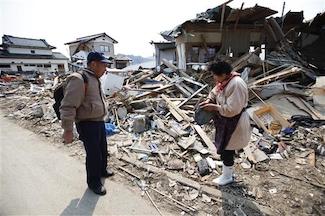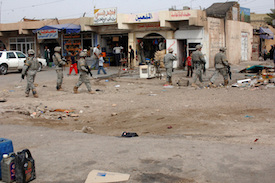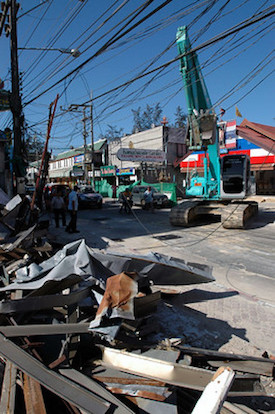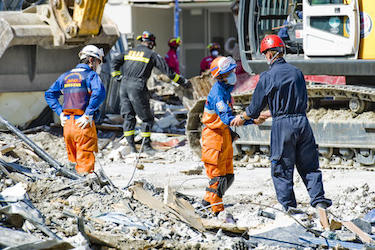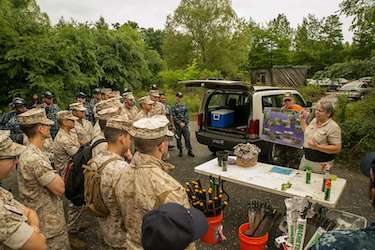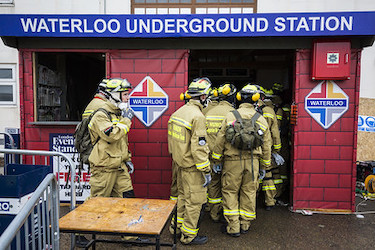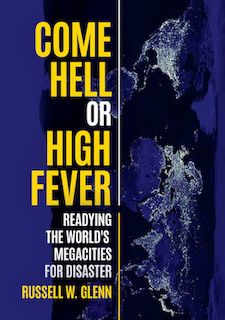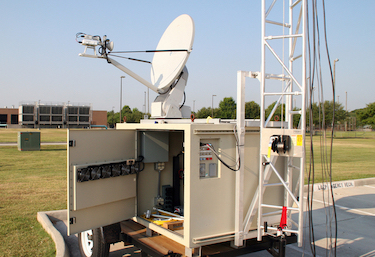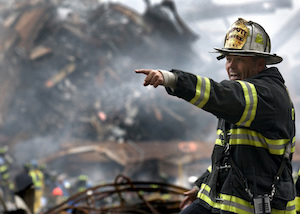Recovering from Urban Disasters, Post Six (Post 14 of 14)
Recovering from Urban Disasters, Post Six (Post 14 of 14)
Russell W. Glenn
The fourteenth of a series of blog posts on Urban Disasters: Readiness, Response, and Recovery by Russ Glenn.
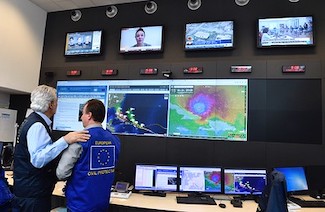
European Emergency Response Coordination Centre (CC BY-NC-ND 2.0)
This, the final of our fourteen posts, wraps up with four additional key points to complement those presented earlier. The total includes four posts each on readying for and responding to urban disasters with the remaining six addressing recovery therefrom.
Breaking with tradition (if tradition exists after only two or three months of precedence), the list of key points appears at the end rather than beginning of this post. That list includes all from previous posts and three additional from this.
Key Point #31: The inevitable doesn’t have to be: Avoiding what history tells us are seemingly inevitable post-disaster problems.
Over 700 people died during Chicago’s 1995 heat disaster. Reading Eric Klineberg’s Heat Wave reinforces our key points #1 and #2 (“Preparation for any urban disaster helps to prepare an urban area for catastrophes regardless of cause or type” and “Urban disasters are more alike than different,” respectively). The similarities between that disaster, NYC’s 1896 heat wave, and other disasters are both numerous and various. The brutal statistics generally offer few surprises; those who died were disproportionately poor and elderly. They also overwhelmingly lived alone. Urban governments or communities that keep track of where its members live, work, or go to school add to readiness. Accounting for residents when disaster strikes should be far quicker in such cases, a boon to first responders and to families awaiting news regarding loved ones. As we have previously recognized, that readiness is magnified when authorities also keep a metaphorical finger on the pulse of their citizenry by knowing where those with physical or other challenges reside. Losing power and therefore air conditioning and elevator use is an inconvenience for most. For others it is life-threatening. It is a death sentence in the case of individuals losing the ability to run essential medical equipment once backup batteries or generators are exhausted. Tokyo’s disaster preparedness maps provide crucial information of value to resident and responder alike: locations of nearby open areas that might provide refuge or sites particularly vulnerable to fire, tremors, mudslides, and other hazards that should be avoided during and in the aftermath of calamity. Given evolutions in data compilation, artificial intelligence, and other technologies, perhaps the time is at hand when similar maps providing the locations and needs of the most vulnerable are available to appropriate authorities. Allowing collection and storage of such information could be voluntary on the part of those to whom the data refers, satisfying those worried about privacy. Updates would be automatic, fed as they could be by medical center entries, pharmacies, relatives, landlords, the individuals themselves, or others approved by the man or woman involved. Backup would have to be such that the data is accessible in times of power loss. Imagine local police, fire, emergency medical technicians, or others knowing where those needing insulin, breathing assistance, or other help are after a catastrophe. Locations could be verified if the individual wears a location monitor or has a cell phone and, again, opts into such information sharing.
This will cost. The wealthy might fund themselves, but disaster after disaster tells us that—as in 1995 Chicago—many of the most vulnerable will be unable to pay. Politicians will resist just as they do when the issue is funding physical infrastructure improvements whose value may come after their terms in office. All but the exceptional politician will seek to push expensive programs down the road just as real estate developers and private property owners sometimes figure they can make their sales before the next catastrophe strikes and thus hedge on buying insurance or taking other precautionary measures.[1]
Key Point #32: Climate change will influence the value of historical lessons.
Notwithstanding our Key Points #9 (“Look backward to look forward”) and #28 (“History has valuable lessons for those who read it”), individuals responsible for megacity disaster preparedness (to include residents) need to recognize that history is a helpful but at times increasingly poor reference when looking forward, whether planning or considering what the character of response or recovery might be. Brooklyn had over five thousand buildings identified as being in flood zones in 2013. Thirty years before only twenty-six were thought to be at risk. Hurricane Sandy’s 2012 waters inundated areas in both Brooklyn and neighboring Queens that were twice the size of floodplains identified at the time of the storm’s visit. Climate change and accompanying sea level rise are rendering previous assumptions and calculations moot. Private parties and public authorities both need to reconsider their flood zone designations, building standards, and other matters built on previous climate and weather histories. Only the foolish turn a blind eye to climate change and its consequences (or, again, those hoping to push needed expenditures down the road).
Key Point #33: Be equitable in rendering recovery assistance…or at least appear to be.
It seems ironic in retrospect, but those in some London communities felt the Germans were discriminating in their bombing during WWII. Initial evidence supported the claims as the earlier-hit neighborhoods were disproportionately occupied by those with lesser incomes. It’s always fortunate when the enemy comes to one’s aid. Author Philip Ziegler concluded that “it was the Germans who saved the situation, however, by extending their bombing to other parts of London.”[2]
The enemy will not always be so accommodating. More often than not, there is no such foe when an urban area suffers disaster. Yet the consequences of urban catastrophes will continue be disproportionately felt by the disadvantaged. Our opening case to this post, that of Chicago’s 1995 heat wave, provides one such example. The tuberculosis that visited London during WWII was, as we also previously noted, unkinder to the poor than those better able to afford housing and care to keep it at bay.[3] There will ever be individuals wanting to make political capital out of urban disasters. Factual or otherwise, they will claim that some parties are benefiting more than others during recovery whether that is true or fabrication. Equity is desirable, albeit an equity based on need. Stability may depend on it…or perceptions of such fairness. Disasters have historically demonstrated they can be sparks that ignite the tinder of unrest. That tinder can be legitimate or created to serve self-interest. Those providing assistance—governments included—should keep the dangers of actual or perceived favoritism in mind as recovery progresses…or fails to do so for some.
Key Point #34: Recovery never stands alone. It is part of an urban area’s continuing evolution.
Josef W. Konvitz observes, “vital cities are never finished.”[4] He is correct. Cities do not stop progressing, decaying, adapting, or otherwise changing because crisis pays a visit. Recovery is part of that evolution. London in 1666 and 1923 Tokyo are among the examples telling us that recovery will be a matter de factocompromise. Some will want to recreate from a blank slate, rebuilding in the mold of their vision. Others will have few ambitions other than recreating some form of shelter, commercial enterprise, and a life hopefully no worse than that before. Regardless of the aspirations at work, wise disaster planning, insightful decisions during response, and informed recovery can shape an urban area’s evolution for the better.
As promised, our complete list of key points from the fourteen posts:
Key Point #1: Preparation for any urban disaster helps to prepare an urban area for catastrophes regardless of cause or type.
Key Point #2: Urban disasters are more alike than different.
Key Point #3: Rehearsing/exercising plans—even in so simple a form as talking through challenges—is essential.
Key Point #4: Plans must be executable.
Key Point #5: No plan will survive contact with the disaster.
Key Point #6: Information is the currency of success
Key Point #7: Urban residents are key to successful disaster response. It follows that they are key to successful disaster preparation.
Key Point #8: The plagues of bureaucracy, poor delineation of responsibilities, and criminality are remoras on any disaster…except the relationship isn’t symbiotic.
Key Point #9: Look backward to look forward.
Key Point #10: Maintaining or improving post-disaster social infrastructure will often be harder than doing so for an urban area’s physical infrastructure.
Key Point #11: Plan for the end, then the now.
Key Point #12: What happens in urban areas doesn’t stay in urban areas…Las Vegas included.
Key Point #13: Not all is what it seems in a city.
Supporting Key Point #13A: Don’t trust appearances.
Key Point #14: Expect the unexpected.
Key Point #15: Common sense sometimes isn’t common.
Key Point #16: Command, leadership, and management are fundamental to disaster response success.
Key Point #17: Getting the response structure right is vital.
Key Point #18: Leadership is important, but who should lead when?
Key Point #19: Effective communications are essential to effective leadership.
Key Point #20: Data counts
Key Point #21: The hurt is different in an urban disaster
Key Point #22: Urban underground locations can be a boon or deathtrap.
Key Point #23: Transition to recovery began yesterday.
Key Point #24: As with targeting during urban combat and judgments when responding, it is important to consider both the short and longer-term implications of decisions and actions throughout urban disaster recovery.
Key Point #25: Recovery is a system comprised of sub-systems interacting with other systems
Key Point #26: There is always a need for centralized and effective anti-corruption oversight.
Key Point #27: Some problems will be unavoidable even with excellent planning and a brilliant disaster response. Identifying them pre-event when possible opens the way to finding solutions or mitigating negative impacts.
Key Point #28: History has valuable lessons for those who read it. No, really.
Key Point #29: Monitor progress…or lack of it…both in the interest of current disaster recovery effectiveness and that during others to come.
Key Point #30a: Residents must be part of successful urban disaster recovery.
Key Point #30b: That is not to say the physical infrastructure can be overlooked.
Key Point #31: The inevitable doesn’t have to be: Avoiding what history tells us are seemingly inevitable post-disaster problems.
Key Point #32: Climate change will influence the value of historical lessons.
Key Point #33: Be equitable in rendering recovery assistance…or at least appear to be.
Key Point #34: Recovery never stands alone. It is part of an urban area’s continuing evolution.
Endnotes
[1] Jeff Goodell is among those who recognize this “push it down the road” phenomenon. See his The Water will Come: Rising Seas, Sinking Cities, and the Remaking of the Civilized World, New York: Little, Brown, and Company, 2017, p. 103.
[2] Philip Ziegler, London at War, 1939-1945, New York: Knopf, 1995, pp. 167-68.
[3] Ziegler, London at War, p. 260.
[4] Josef W. Konvitz, The Urban Millennium: The City-Building Process from the Early Middle Ages to the Present, Carbondale: Southern Illinois University Press, 1985, p. 195.
The previous installation of this series “Responding to Urban Disasters, Post Five (Post 13 of 14),” appeared on 07 February 2023.
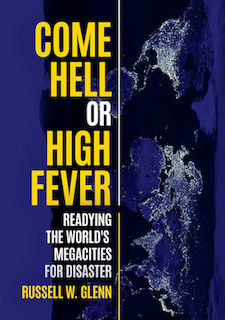
This completes the “Urban Disasters” series based on research for Dr, Glenn’s recently released book Come Hell or High Fever: Readying the World's Megacities for Disaster published by the Australian National University Press.

